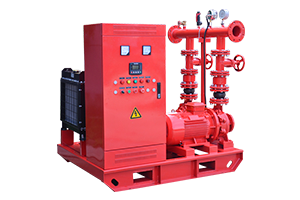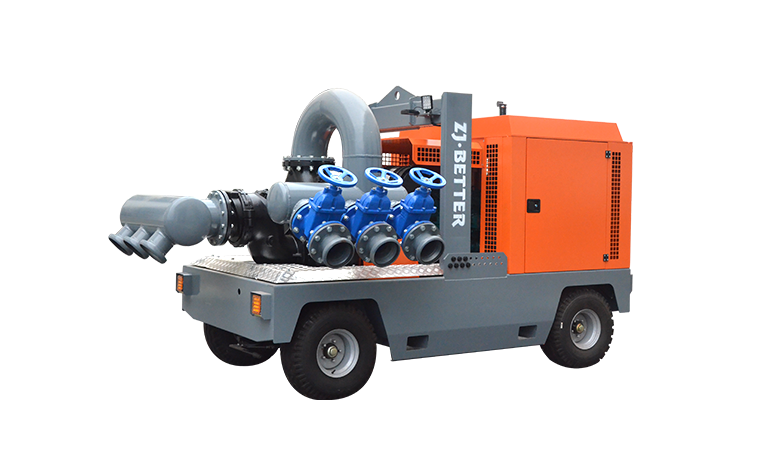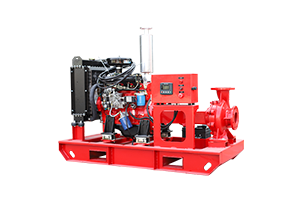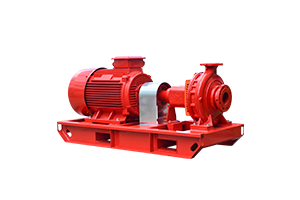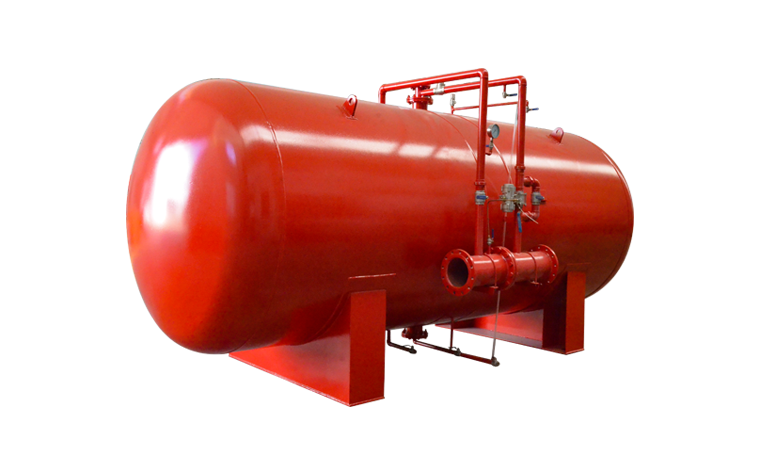-
 Jun 01, 2023common problems in the use of fire pumpsFire pumps are essential components of a fire safety system. Without a properly functioning fire pump, firefighters’ ability to put out a fire is significantly decreased. Unfortunately, fire pumps are prone to a variety of problems that can have a negative effect on their performance. To help ensure the safety of buildings and properties, it’s important to understand the most common problems associated with fire pumps.
Jun 01, 2023common problems in the use of fire pumpsFire pumps are essential components of a fire safety system. Without a properly functioning fire pump, firefighters’ ability to put out a fire is significantly decreased. Unfortunately, fire pumps are prone to a variety of problems that can have a negative effect on their performance. To help ensure the safety of buildings and properties, it’s important to understand the most common problems associated with fire pumps.
The first common problem with fire pumps is insufficient maintenance and inspections. Fire pumps are highly technical pieces of equipment and require regular checks and maintenance in order to work at peak efficiency. Without proper maintenance and inspections, problems can range from a decrease in fire suppression capabilities to dangerous malfunctions.
Another common problem associated with fire pumps is a lack of power. Fire pumps run on electricity, and it’s essential to ensure that the building’s electrical supply is adequate and reliable. Insufficient electrical power can cause pumps to not work properly, leading to decreased performance and safety.
Improperly sized fire pumps are another common problem. The size of the fire pump needs to be selected to meet the requirements of the building, based on a risk assessment. A pump that is too weak for the size of the building will not adequately protect it, while a pump that is too powerful can be dangerous and inefficient.
Finally, improper testing both before and after installation is a common problem associated with fire pumps. Testing procedures help ensure that the pumps are working correctly in order to efficiently put out any fires that might occur. Improper testing could lead to a variety of problems, ranging from decreased performance to unnecessary wear and tear. Proper testing should always be done before and after any fire pump job.
Overall, it’s important to be aware of the common problems associated with fire pumps in order to help ensure their proper performance. Regular maintenance, proper testing, adequate electrical power, and the correct size pump are all essential in ensuring a safe and efficient fire safety system.View details -
 May 31, 2023How to Clean a Fire Pump?Fire pumps are essential for fire prevention and safety. They should be regularly maintained, serviced, and inspected to ensure they are working properly. Cleaning a fire pump regularly is a critical part of proper maintenance and can help extend its life. It also helps to prevent blockages or corrosion that can lead to mechanical failure.
May 31, 2023How to Clean a Fire Pump?Fire pumps are essential for fire prevention and safety. They should be regularly maintained, serviced, and inspected to ensure they are working properly. Cleaning a fire pump regularly is a critical part of proper maintenance and can help extend its life. It also helps to prevent blockages or corrosion that can lead to mechanical failure.
The first step in cleaning a fire pump is to make sure the pump is turned off and disconnected from any source of electricity. This will prevent any accidental electrical shocks while cleaning. It is also important to clean the exterior of the pump to remove any dirt and debris that has accumulated on it.
After the exterior of the pump is cleaned, the interior should be inspected for any blockages or clogs. A special pump solvent should be used to flush the pump and remove any sludge that has built up. The interior of the pump should then be wiped down with a soft cloth to remove debris and oil residue.
Once the interior of the pump is cleaned, the outside should be reassembled. All of the bolts should be tightened and the electrical connections checked. The fire pump should also be connected to a power source before being tested to make sure it is functioning properly.
Cleaning a fire pump is an important part of ensuring its efficiency and proper operation. It should be done regularly to help prevent any blockages or mechanical failures. Proper maintenance and cleaning will help ensure your fire pump is up and running in the event of an emergency.View details -
 May 29, 2023How to Maintain a Fire Pump?Fire pumps are essential components in fire protection systems, as they help provide the water pressure necessary to fight a fire. As such, it is important to make sure that fire pumps are regularly maintained to ensure their proper functioning and optimal performance. There are several steps that can be taken to ensure that the fire pump is in good condition.
May 29, 2023How to Maintain a Fire Pump?Fire pumps are essential components in fire protection systems, as they help provide the water pressure necessary to fight a fire. As such, it is important to make sure that fire pumps are regularly maintained to ensure their proper functioning and optimal performance. There are several steps that can be taken to ensure that the fire pump is in good condition.
First and foremost, it is important to check the pressure gauges regularly. The pressure gauges should usually be checked every time the fire pump is tested or operated to ensure that the engine is generating enough pressure. The pressure should be checked against the manufacturer's recommended levels.
It is also necessary to regularly inspect the fire pump to make sure that all components are functioning properly. This includes everything from the motor to the intake and discharge lines. Any signs of wear and tear should be monitored and addressed immediately. Furthermore, any signs of damage should be assessed and repaired as soon as possible.
In addition, it is important to ensure that the fire pump is properly lubricated to help prevent any unnecessary wear on the components. Lubricants should be changed every six months, and all the bearings should be checked for any excessive wear or tear. It is also important to check that the batteries are fully charged since they are essential in case of a power outage.
Finally, it is important to regularly test the fire pump to make sure it is operating and functioning properly. This can be easily done by running through a series of tests on the pump and engine to make sure that everything is in working order. As such, testing the fire pump is an essential part of proper maintenance.
In conclusion, it is clear that regular maintenance of fire pumps is important if they are to remain in a functional state. With these tips, a fire pump can be kept in optimal condition, providing an additional level of safety and security.View details -
 May 26, 2023How to overhaul and maintain fire pumps?Fire pumps are an integral part of any building's fire safety system. It is important to regularly inspect, maintain and overhaul your fire pump to ensure it is working properly and safely. Regular maintenance and overhauls will help ensure the safety and reliability of your fire pump in the event of an emergency.
May 26, 2023How to overhaul and maintain fire pumps?Fire pumps are an integral part of any building's fire safety system. It is important to regularly inspect, maintain and overhaul your fire pump to ensure it is working properly and safely. Regular maintenance and overhauls will help ensure the safety and reliability of your fire pump in the event of an emergency.
The first step in performing an overhaul and maintenance of your fire pump is to perform an external inspection. This will include checking for visible signs of damage or wear and tear, such as leaks, corrosion, or missing parts. Make sure to check the manufacturer's manual for instructions on how to perform the inspection, as there can be very specific steps to follow.
If any damage is found during the external inspection, it is important that repairs are done immediately to ensure the fire pump will function properly. In some cases, such as a bad fuel injector, the entire fire pump may need to be dismantled and rebuilt. Make sure to follow the instructions of your fire pump manufacturer to ensure the repairs are done correctly and properly.
When all external repairs have been made and the fire pump is in good working order, it is time to perform an internal inspection. This will include inspecting the internal parts of the pump, such as seals, bearings, and bushings, for any signs of wear and tear. If any parts are found to be damaged or worn, they should be replaced.
Once all repairs and replacements have been completed, it is important to check the fire pump for proper operation. This will involve running the pump at different speeds and pressures to check for any issues. If the fire pump does not operate correctly, additional repairs may be necessary. Following these steps will help ensure the safety and reliability of your fire pump in the event of a fire.View details -
 May 25, 2023How to choose a mobile pump truck?A mobile pump truck, also known as a vacuum truck, is a specialized vehicle used to transport and unload large quantities of liquid and dry bulk materials. It is important to consider the type of materials being transported as well as the budget before making a decision on which mobile pump truck to choose.
May 25, 2023How to choose a mobile pump truck?A mobile pump truck, also known as a vacuum truck, is a specialized vehicle used to transport and unload large quantities of liquid and dry bulk materials. It is important to consider the type of materials being transported as well as the budget before making a decision on which mobile pump truck to choose.
The first step to choosing the right mobile pump truck is to consider the types of materials that require transporting and the size of the loads. It is important to ensure that the mobile pump truck has all the necessary features to successfully transport the materials including the volume and weight capacity, as well as which safety features are available. It may also be necessary to consider the terrain the truck must travel on, as some may not be suitable for all surfaces.
The budget is another factor to consider when choosing a mobile pump truck. Different trucks can vary widely in price, so it is important to compare and weigh the options before making a purchase. It may be necessary to consult a professional to ensure that the right choice is made and that the truck is fit for purpose.
The environment is another factor to consider when selecting a mobile pump truck. It is important to assess the environmental impact of the truck in terms of energy usage and emissions. It is also important to choose a truck that meets all local regulations and safety standards.
Finally, it is important to consider the type of maintenance and repairs required for the mobile pump truck. Different models have different requirements for regular maintenance and repairs. Understanding the maintenance and repair needs of the truck can help ensure that the truck runs safely and efficiently. With the right selection, a mobile pump truck can be an invaluable asset to any business.View details -
 May 24, 2023What preparations do I need to do before the mobile pump truck starts?I. Introduction
May 24, 2023What preparations do I need to do before the mobile pump truck starts?I. Introduction
Mobile pump trucks are becoming increasingly popular and are widely used in various industries due to their convenience and flexibility. However, operating such a sophisticated vehicle comes with added responsibility and, as such, requires careful preparations before use. From checking important safety regulations to making sure all documents are in order, this article guides you through the steps necessary to get your pump truck ready for action!
II. Pre-trip check
Before operating the pump truck, one must first complete a pre-trip check. This includes inspecting the vehicle for any damage or defects, checking all the fluid levels, ensuring the brakes are functioning well, testing all lights and mirrors, and verifying the tires are properly inflated. Additionally, all safety equipment on board, such as first aid kits, fire extinguishers, and seat belts, should be in working order.
III. Ensuring documents are in order
The next step is to make sure all relevant documents are in order. These can include a copy of your driver's license, the vehicle registration details, and any permit required to operate your pump truck in the location of use. Additionally, it is essential to check the required insurance documentation and any safety certificates needed for the job.
IV. Maintenance planning
Prior to starting the pump truck, it is also necessary to plan for routine maintenance, such as changing the oil and filters, checking the levels of coolant, and checking all hoses and pipes for signs of wear or damage. Planning for regular maintenance can help prolong the life of your pump truck, ensuring it is always running at peak performance.
V. Conclusion
In conclusion, operating a mobile pump truck requires taking certain safety and legal precautions. From completing the pre-trip checks to ensuring documents are in order and making maintenance plans, taking the necessary steps before getting into the cabin can help make your journey smooth and stress-free.View details

